- Home
- Garden Wildlife
- Arthropods
- Crustacea
Crustacea - introduction
Globally, the arthropod Class Crustacea contains 67,000 described species, and it is the largest arthropod group apart from the Insecta, which are hugely larger with over a million described species. It would be reasonable to say that the Crustacea are the dominant arthropods in marine habitats, while the insects dominate on land, with very few marine species. Both groups are well represented in fresh water. There are a few terrestrial crustacea, notably the woodlice in Britain and Ireland, but rather more exciting terrestrial crustacea live in the tropics.
Crustaceans are extremely diverse in size and structure. They share with insects the presence of jaws, compound eyes and a basic division of the body into head, thorax and abdomen. They differ in many key ways. Their limbs are "biramous" - with two branches, although this is often hard to see without dissection. They have two pairs of antennae, only two pairs of mouthparts, and breath using gills, but these can be modified in terrestrial species. Crustacea have swimming larvae, and many tropical terrestrial crustacea have to return to the sea to release their eggs.
Terrestrial crustaceans
There are only two significant groups of terrestrial crustacea in Britain and Ireland, and these are the woodlice and the landhoppers. Both are related to groups more abundant in freshwater and marine habitats, but the woodlice seem to have been on land since the Carboniferous period some 300 million years ago. The landhoppers are very similar to aquatic amphipods. The two groups are covered on our page here.
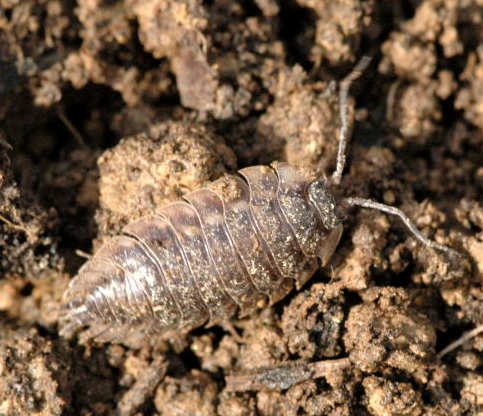
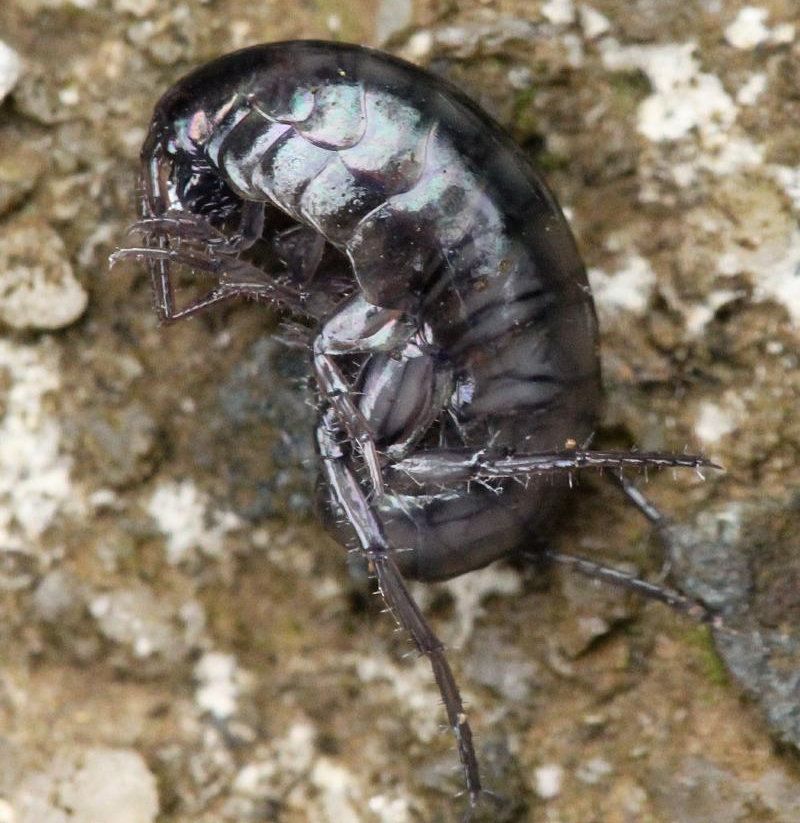
Woodlouse Oniscus asellus Landhopper Arcitalitrus dorrieni
Freshwater crustacea
There are over 400 species of freshwater crustaceans found in Britain and Ireland. They belong to many different groups and some are extremely small and planktonic, and have an important role in the flow of biomass through food chains. We cover a few of the more important pond species in our page here.
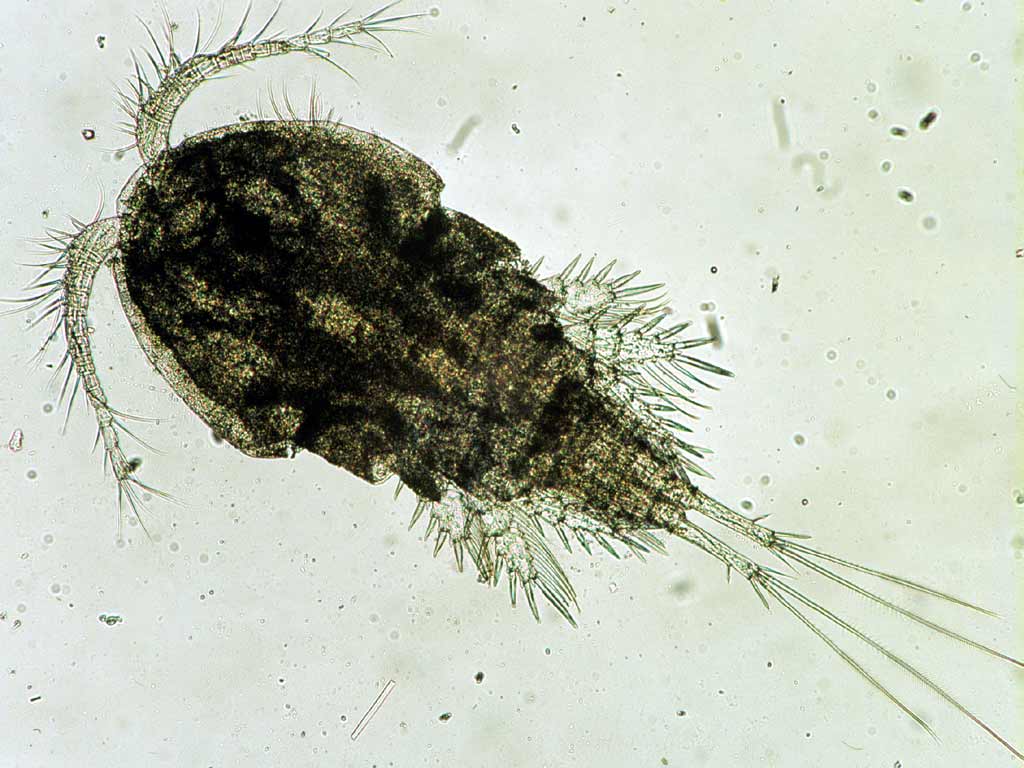
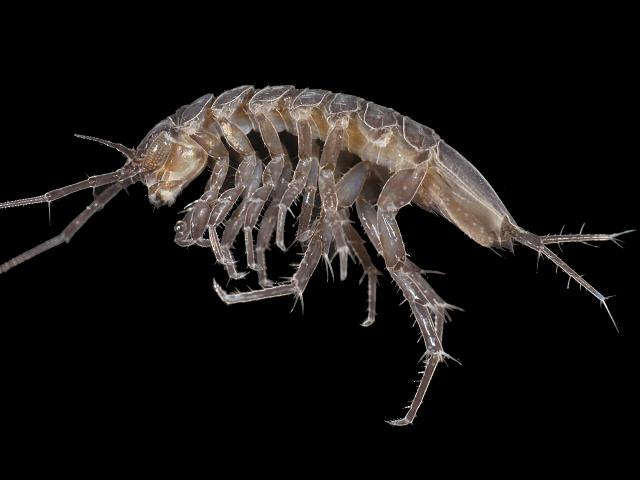
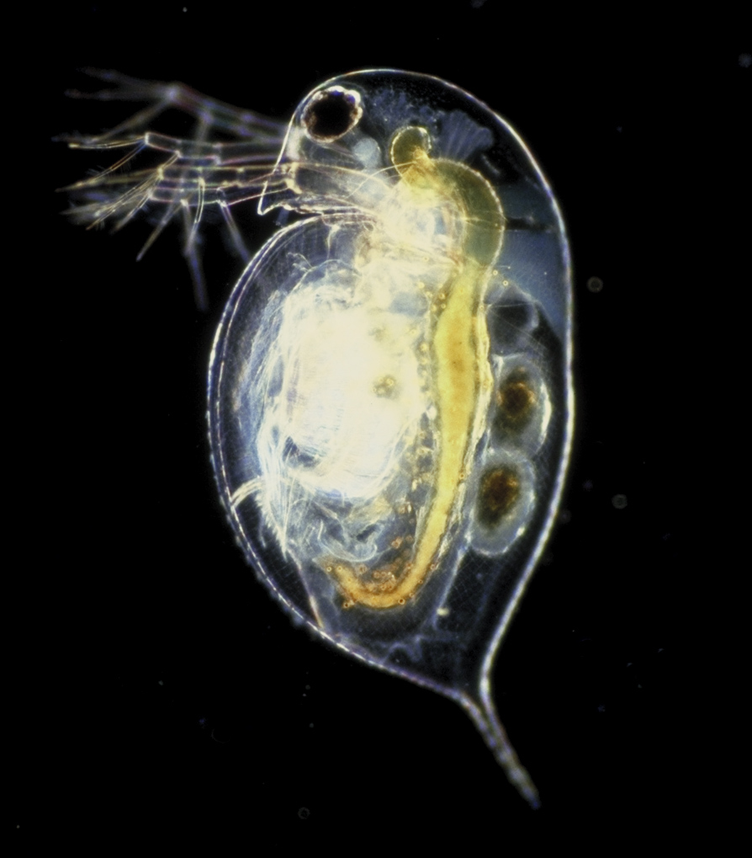
Freshwater crustacea: minute copepod tiny water flea water slater
Page written and compiled by Steve Head
Crustacea - introduction
Globally, the arthropod Class Crustacea contains 67,000 described species, and it is the largest arthropod group apart from the Insecta, which is hugely larger with over a million described species. It would be reasonable to say that the Crustacea are the dominant arthropods in marine habitats, while the insects dominate on land, with very few marine species. Both groups are well represented in fresh water. There are a few terrestrial crustacea, notably the woodlice in Britain and Ireland, but rather more exciting terrestrial crustacea live in the tropics.
Crustaceans are extremely diverse in size and structure. They share with insects the presence of jaws, compound eyes and a basic division of the body into head, thorax and abdomen. They differ in many key ways. Their limbs are "biramous" - with two branches, although this is often hard to see without dissection. They have two pairs of antennae, only two pairs of mouthparts, and breath using gills, but these can be modified in terrestrial species. Crustacea have swimming larvae, and many tropical terrestrial crustacea have to return to the sea to release their eggs.
Terrestrial crustaceans
There are only two significant groups of terrestrial crustacea in Britain and Ireland, and these are the woodlice and the landhoppers. Both are related to groups more abundant in freshwater and marine habitats, but the woodlice seem to have been on land since the Carboniferous period some 300 million years ago. The landhoppers are very similar to aquatic amphipods. The two groups are covered on our page here.


Woodlouse Oniscus asellus Landhopper Arcitalitrus dorrieni
Freshwater crustacea
There are over 400 species of freshwater crustaceans found in Britain and Ireland. They belong to many different groups and some are extremely small and planktonic, and have an important role in the flow of biomass through food chains. We cover a few of the more important pond species in our page here.



Freshwater crustacea L-R: minute copepod, tiny water flea, water slater
Page written and compiled by Steve Head












